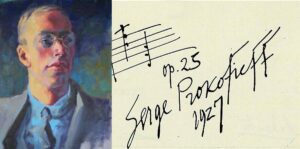Piano Forum
 |
Enfant Terrible or Childishly Innocent? – Prokofiev’s Complete Piano Works Now on Piano Street In our ongoing quest to provide you with a complete library of classical piano sheet music, the works of Sergey Prokofiev have been our most recent focus. As one of the most distinctive and original musical voices from the first half of the 20th century, Prokofiev has an obvious spot on the list of top piano composers. Welcome to the intense, humorous, and lyrical universe of his complete Sonatas, Concertos, character pieces, and transcriptions! Read more >> |
For more information about this topic, click search below!
 Topic: The future of music notation
Topic: The future of music notation